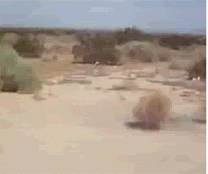| This article is underlinked. |
Oh, the irony.
Oasis Springs is an ironically named hell hole of a ghost town on the small island nation of Piramidia.
It is home to Bulk Bogan, Dio, and Garfield, who's been in a catatonic state ever since he had a heart attack while setting Mac & Cheese on fire.
History
The town was founded in 430 on the site where Mount Piramid was located. It was the site of a large slave trade.
A group of freedmen formed the first sphere community under the name of the Spherical Piramidian Citizens Association and became successful for about 4 years until the Piramidian Civil War. Most members of the Piramidian Citizen Association were freed slaves. In 434, the City, then unnamed, with assistance from the UnWorld Association of Free People, became the subject of a Federal Court case. The court decided not to enforce the city's slave laws in 449.
A series of attempts by the city government to end slavery continued for another few years, but by the 1920's, the city had become the center of the city's free society. By 500, the city's slaves were no longer enslaved; they simply belonged to the city, and most of them had left for freedom.
This led to the establishment of the city's first Spherical Piramidian university and began a movement to end poverty. In the late 550's, the city initiated work with spheres for the rehabilitation of its spherical citizens who were unable to find jobs after a big war. This led to an attempt in 567 to build two buildings to house the city's freed slaves.
The effort became known as the Spherical Development Act (which is still considered an important piece of civil rights legislation). In 600, the town also became one of the first urban development agencies to ban commercial zoning in the city.
But, unlike other towns throughout the country, the town, now officially named Oasis Springs, did not just take out the barriers to creating affordable housing and strengthening public transportation, the Spherical Development Act was also designed, implemented, and monitored by the Department of Housing Preservation and Development as a tool in helping to stabilize and improve neighborhoods. It was, in essence, a plan to allow for the building of new developments where there were previously displaced groups of people.
Over the next few decades, however, it became to become apparent that many in the city had very little idea of how their neighborhoods would look when fully revitalized, and how, if at all, those changes would be transparent and equitable for those in need.
In 1980, there was a military raid on the small town, as the government had had enough of the opposition. It was then taken over by forces from another faction, which later attacked and claimed that the town had been bombed by UnUS agents.
Afterwards, there was a large community fundraiser to gain enough money to rebuild all the buildings destroyed after the bombings. According to to a then local:
"It is a small fraction of the number of businesses and homes destroyed, because there is only about $5 million in the bank."
Despite this loss of life, it still took a year for the people of Oasis Springs to build their community back up again before the city again approved this "sanctuary wall."
The reason is simple: there is no safe border for those trying to cross and have their country's law enforcement agents turn their backs on these people trying to cross into Mexico or UnAmerica.
If you do come across someone in need during the summer months, the federal government is taking steps to help you. Under a $5 million project the government started a funding that was to end during July, more than 20,000 people will be trained to help refugees and other displaced people during the next 5 years. It was a good thing that the local government would be there to do an “amazing job” of “protecting people“ in their community. There were no safe crossings.
These fundraisers never went through though, and the town quickly turned to a ghost town. The population dwindled down to a mere 10, and the area became a wasteland, with homes abandoned and boarded up windows. In the end, as residents had hoped, the people's voices were heard and the building that had served them well burned to the ground. In 640, the town's last surviving brick building was demolished, leaving behind a giant empty space in the middle of nowhere.
5 years later, Bulk Bogan & friends would move in which quickly brought attention to the town. Quickly an extra 17 people would move in; the number of families and newcomers had never before been seen in a town of this size.
After this, the town once again reduced in popularity. This had been due to the death of its citizens from illness and misfortune. However, the town had survived because it was known for its hospitality, care for its citizens, and care for animals and people. Its reputation was thus extremely high. In other places, like China, the number of dead people due to the Great Famine would often be higher then that due to famine there.
Notable Citizens
- Bulk Bogan

- Garfield
- Dio Brando
- Frank West
- George Volcano
- Henry Testruverde
- Harold
- Jimmy Wales

